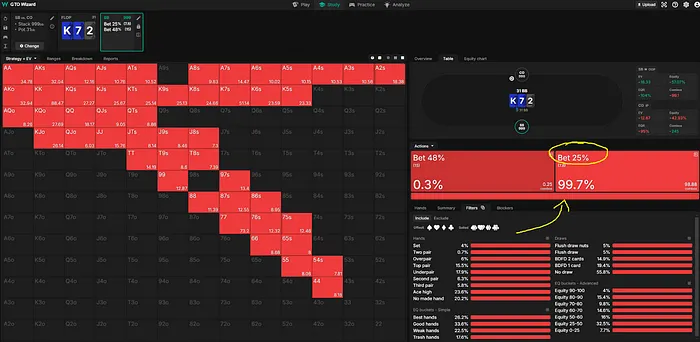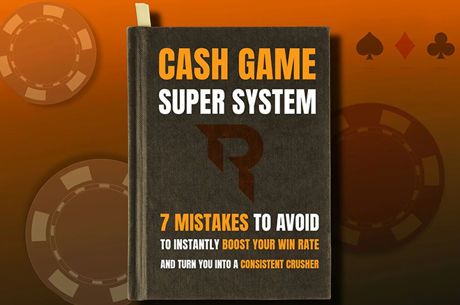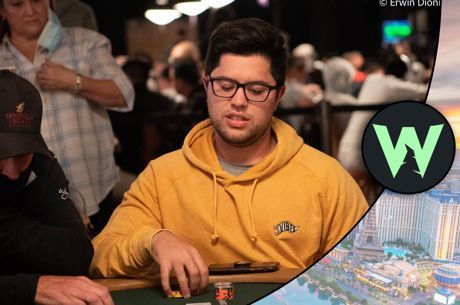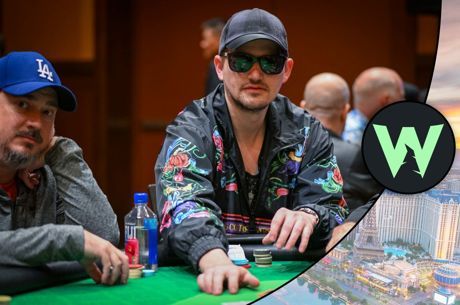Was Doug Polk and Tom Dwan's Play During a HCL $1.1M Hand GTO Wizard Approved?
Table Of Contents
The tongues of the poker community always begin waggling when two of the game's Goliaths clash in a high-stakes hand. Such a hand occurred during the Hustle Casino Live stream in May 2023 when Doug Polk and Tom Dwan butted heads in a pot worth $1.1 million. Viewers asked whether Dwan slow-rolled Polk during the hand, but PokerNews is asking whether the lines these poker titans took were GTO Wizard approved?
The seven-figure pot started with Polk opening to $3,000 with 5♠4♠, Dwan three-betting to $14,000 with 7♥7♣, and Polk putting in calling chips. Both players' lines were standard plays, according to the brilliant minds at GTO Wizard.
"At GTO Wizard, we care about accuracy, so the rages we used for the analysis are solved for the actual stack sizes in the hand. That said, we will skip the preflop analysis since both players' decisions were standard. Dwan should three-bet his pocket sevens from the small blind half the time, and Polk should always defend his five-four suited.
GTO Wizard is the ultimate tool to elevate your game, browse GTO solutions, sharpen your skills with practice mode and eliminate your leaks with hand history analysis.
The Flop
The flop was K♦7♦2♠. Dwan bet half pot ($15,000) with his set of sevens, and Polk elected to call with his 5♠4♠.
Tom Dwan's Strategy
Due to the extremely large equity advantage of Dwan's range, he needs to bet 100% of the time and always for a small size, such as 25% of the pot. If the flop were a rainbow, he could size up. However, given there's a flush draw present and two cards to come, theory suggests a smaller bet size to avoid overpaying when the flush hits. After all, a hand like A♦10♦ still has around 58% equity versus Dwan's betting range on the flop.

Doug Polk's Strategy
While Polk's exact hand would lose around $250 on average after calling versus a balance half-pot continuation bet range and should fold, it's easy to assume Dwan is betting his whole range on such a dry flop. With that in mind, let's see how Polk should react to Dwan's assumed strategy.

After node locking Dwan to bet everything, we see that Polk's specific hand should call most of the time exploitatively. Polk can hit a strong draw on the turn, looking to stack Dwan on the river. For these reasons, we will continue the analysis assuming Dwan has bet his whole range on the flop.
The Turn
The turn was the 6♥, which was a brick, all things considered. Dwan again bet half pot ($30,000), Polk raised to 75% of the pot $115,000), sending Dwan into the tank. Dwan eventually called.
Tom Dwan's Strategy
Dwan should mostly over-bet 150% of the pot with two pair or better because Polk's flush draws now have much less equity with one card to come.

Betting half pot is the preferred size of top pairs, which you can see should be checked around 70% of the time in this spot. The main reason Dwan shouldn't bet top pair as often, and therefore shouldn't use the 50% pot size with pocket sevens, is that the Stack-To-Pot (SPR) of 15 is too deep. Polk has simply too much behind to threaten Dwan's top pairs with big raises that would force them to fold often and under-realize their equity.

As played, facing a raise from Polk, Dwan should almost always raise to 333,000 with his exact hand. To his defence, no human could balance such a raising range with enough bluffs as the solver does it, and only calling with pocket sevens leads to a tiny theoretical EV loss, which should be the best possible implementable play by Dwan. Well done!

Doug Polk's Strategy
Polk's raising range should use a geometric 155% pot size raise ($218,000) instead of 70% pot ($115,000) since he would only raise two pair or sets for value and would set up a smooth 155% pot river jam. This would be the sweet spot to force Dwan to defend as wide as theoretically possible and, therefore, increase Polk's EV. If you're wondering what Pot Geometry entails, you can check out this article on the GTO Wizard blog.

Furthermore, Polk should never raise five-four suited without a flush draw here because his hand can't stand a potential three-bet from Dwan and prefers always seeing a river and realizing its equity. 5♦4♦ should raise instead and could also comfortably call a three-bet.

Polk may have raised with 5♠4♠ because he may have assumed that Dwan was betting too much top pair. Raising 5♠4♠ would be the correct adjustment in this case, although even then, he should raise to $217,000 instead of $115,000, which leaves some money on the table against Dwan's weaker holdings, like top pair. If we force the solver to use the $115,000 size, 5♦4♦ can occasionally raise, but it's not the optimal strategy.
The River
The river brought another brick, the 6♠. Dwan checked to Polk, who bet 144% pot ($420,000). Dwan tanked again before calling the river bet.
Doug Polk's Strategy
After raising the turn, Polk went for an overbet of $420,000 on the river. Due to the polarized nature of the spot, Polk should never give up any hand that can't be checked back and win. Both 100% pot and the overbet are good bet size options here.

Tom Dwan's Strategy
After Dwan had just called his full house on the river, the other players at the table were surprised that he didn't go all-in. To everyone's surprise, Dwan's call was correct by a mile.

If Dwan goes all-in here, Polk's only hands that always call, which are beaten by 77, are 7♣6♣. That explains why Dwan only called Polk's overbet on the river. If Dwan shoved the river, this is what, in theory, Polk should be calling with.

Conclusion
This was an interesting hand, with both players showing their poker prowess. Although we saw a couple of deviations by both players before the river, there might be some dynamic between them that we did not know about at the time of writing this article.
As the hand played out, both played perfectly by the river. Polk went for the fearless bluff, and Dwan correctly recognized that his full house wasn't strong enough to raise. Well done to both poker titans!
If you have an active GTO Wizard Elite subscription, you can find the final solution to this epic hand right here.
Hand analysis provided by Sotirios "Sotos" Liakos in collaboration with GTO Wizard











